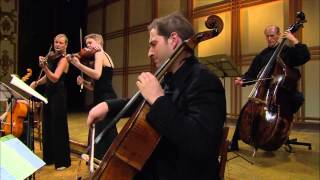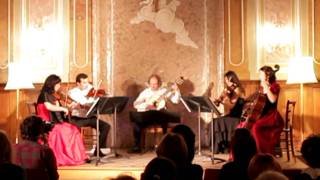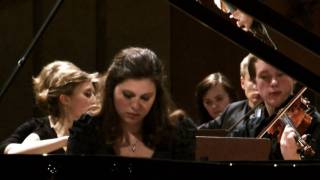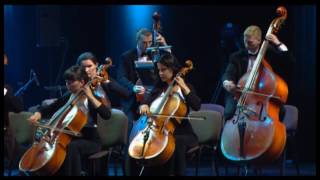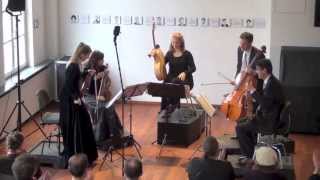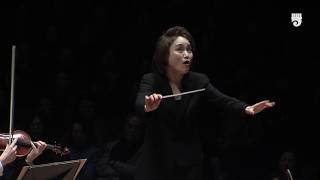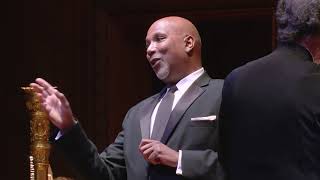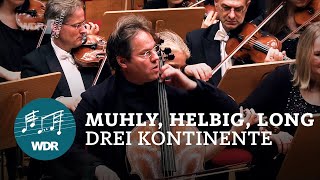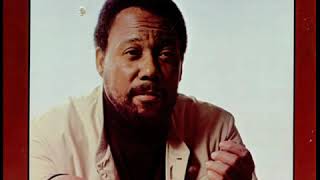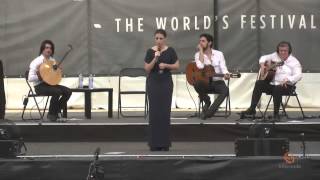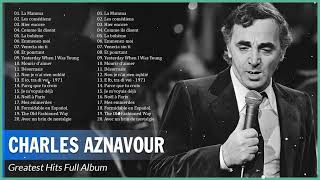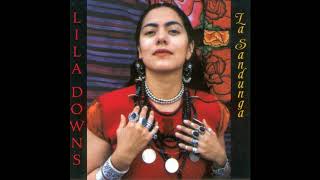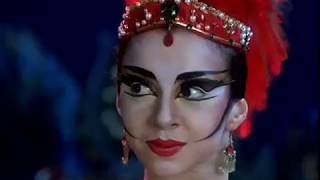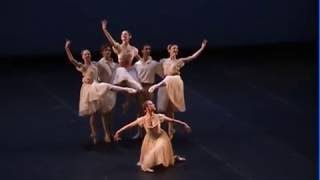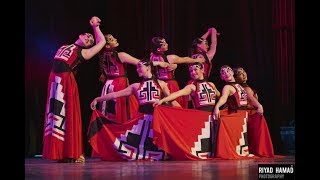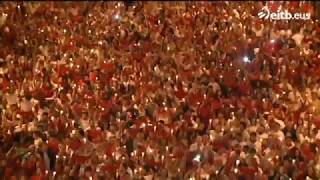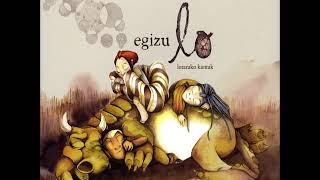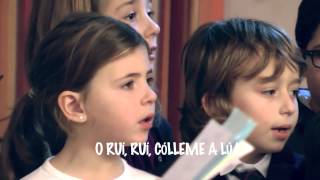Recommended music videos for initiation to classical music
Johann Sebastian Bach (1685-1750) was a German violinist, organist, conductor and composer; He was born in Eisenach into the most prominent musical family in history with more than 30 famous composers within it. In 1703 he obtained his first job as a court musician for the Prince of Arndstat and in 1707 he moved to Mülhausen as an organist, where he married his cousin Maria Barbara with whom he had seven children. After the death of his wife in 1720, he remarried after a year and a half to María Magdalena with whom he would have another thirteen children. In 1723 he moved to Leipzig where he would reside until his death at 65 years. A prolific composer, he is considered one of the main three geniuses in the History of Music along with Mozart and Beethoven.
The catalog of Bach's works or Bach-Werke-Verzeichnis , better known by its acronym BWV , consists of a numbered index of all the composer's works arranged thematically by type of work, genres and according to their vocal or instrumental nature and used by academics and musicians from around the world. This catalog was created in 1950 by the German musicologist Wolfgang Schmieder .
The concerto grosso (plural, concerti grossi ) was a baroque instrumental form of Italian origin based on the contrast between a small group of soloists ( concertino ) and a full orchestra ( ripieno or tutti ). The concerto grosso dates from about 1670 and can be attributed to Alessandro Stradella , who appears to have written the first musical work in which a "concertino" and a "ripieno" characteristically face each other, despite not using the term concerto grosso . Giovanni Lorenzo Gregori is the first composer to use the term concerto grosso .
The Brandenburg Concertos , which we present today, constitute a collection of six concerts (concerts 1, 2, 4 and 5, grosso concertos; numbers 3 and 6, orchestral) that Johann Sebastian Bach presented in 1721 to Christian Ludwig , Marquis of Brandenburg , and are something like the “crown jewel” of instrumental music throughout the Baroque. Bach probably composed the concertos while he held the position of Kapellmeister at Köthen , and the total number required (except for the first concerto, which was rewritten for a special occasion) coincides exactly with the 17 performers that Bach had at his disposal at Köthen. . Today they are offered to us by the unforgettable Italian maestro Claudio Abbado (1933-2015) conducting the Mozart Orchestra .
Luigi Boccherini (1743-1805) was a virtuoso Italian cellist and composer, whose father was also a cellist; From him he received his first lessons on the instrument and at the age of thirteen he went on stage as a concert cello player. Later, under the tutelage of Vannuci, he perfected his instrumental technique in addition to studying harmony, counterpoint and composition. He continued his studies in Rome and after visiting and residing in different European cities, he settled permanently in Madrid where he wrote most of his musical production. Boccherini wrote a large amount of chamber music (more than one hundred quintets and another ninety string quartets, as well as trios, sonatas and pieces in other genres) and his orchestral repertoire includes nearly 30 symphonies and concertos.
Of the chamber music produced by Boccherini , the 16 Guitar Quintets form an important legacy, of which it has only been possible to recover and recompose nine of them. What is striking in our time is the fact that the music of these quintets comes from previous works by the same author, a custom very common at that time.
Today we offer the fourth movement of the Guitar Quintet No. 9 “ La Retirada de Madrid ” in a version of the Boccherini Quintet formed by Gerald Smrzek (Austria) - Guitar, Valbona Naku (Albania) - Violin, Armando Toledo (Cuba) - Violin, Lina Jihye Kim (Korea) – Viola, Maddalena del Gobbo (Italy) – Violoncello
Robert Schumann (1810-1856) was a German composer, one of the pillars of Romanticism . He studied piano, although due to an incurable injury to his right hand, he left his piano career to focus on composition. He married Clara Wieck (“Clara Schumann”), daughter of his teacher, composer and prodigious pianist; Both maintained a close friendship with Brahms . From the age of 23 he suffered several depressive episodes and hallucinations with a suicide attempt in 1854. Until he was 30 he only wrote works for piano and lieder (songs); But encouraged by his wife, he dared to write heavier works and thus wrote several choral works, chamber works, and orchestral works, among which his four symphonies, a dramatic poem, Manfred , and an opera stand out.
The Piano Concerto in A minor, Op. 54 is a concert piece for piano and orchestra written by Robert Schumann between 1841 and 1845. It premiered on December 4, 1845 in Dresden and its first publication took place in 1846. The work is dedicated to the German pianist and composer Ferdinand Hiller . It is one of the most performed and recorded piano concertos of the Romantic period . The concert, structured in three movements, has an almost symphonic character, in clear contrast to the then predominant vision of the concert as a primary vehicle for virtuosic exhibition, exemplified by the concert works of Franz Liszt and Nicolò Paganini . In fact, the technical demands of the work, which are not inconsiderable, are almost totally subordinated to thematic interest and structural clarity.
First movement , Allegro affettuoso . It is written in the key of A minor and in 4/4 time. The movement is constructed broadly and very freely according to the traditional sonata form . It begins without an orchestral introduction with a descending and darkly martial turn. The entire piece is structured around a beautiful main theme marked by great solemnity, which becomes the primary source of melodic material. The development moves from one mood to another in an almost dizzying manner, at the same time exploring the ambiguities of the different components of the themes. Schumann skillfully uses the long cadenza as a battleground for further emotional conflict before concluding the movement with a decisive return of the soaring first theme.
Today the pianist Weronika Chodakowska offers us the final part of the First Movement , accompanied by the Symphony Orchestra of the Frederic Chopin School of Music in Warsaw conducted by maestro Sławek A. Wróblewski .
Hans Zimmer (1957) is a German composer of soundtracks and video games. In 1988, the composition of the soundtrack for the film Rain Man earned his first Oscar nomination; From there he joined Hollywood doing various jobs and began to be known and recognized in specialist and popular environments. In 1994 he won his Oscar with the soundtrack of The Lion King and has been awarded with the Golden Globes, BAFTA, Emmy, Saturn and Grammy , to the point that he is known in his world as "the omnipresent Zimmer ", because His compositions appear on the most diverse occasions. Currently he is considered one of the most relevant composers of soundtracks.
Today we offer a selection from the soundtrack of the movie “Pirates of the Caribbean” performed by the Presidential Orchestra of the Republic of Belarus conducted by maestro Viktor Babarikin .
Recommended classical music videos
Luigi Boccherini (1743-1805) was a virtuoso Italian cellist and composer, whose father was also a cellist; From him he received his first lessons on the instrument and at the age of thirteen he went on stage as a concert cello player. Later, under the tutelage of Vannuci, he perfected his instrumental technique in addition to studying harmony, counterpoint and composition. He continued his studies in Rome and after visiting and residing in different European cities, he settled permanently in Madrid where he wrote most of his musical production. Boccherini wrote a large amount of chamber music (more than one hundred quintets and another ninety string quartets, as well as trios, sonatas and pieces in other genres) and his orchestral repertoire includes nearly 30 symphonies and concertos.
Quintet with Guitar G 448 D-Major . Of the 12 quintets he wrote (2 series of 6), it is believed that only 9 were published and of them, one was lost. Today we present Quintet No. 4. D Major G448 known as “Fandango”, structured in three movements: I (0´00´´) PASTORALE .-. II (4´18´´) ALLEGRO MAESTOSO .-. III (10´44´´) GRAVE ASSAI – FANDANGO, from which the quintet takes its nickname. The performance is performed by the string quartet of members of the Lucerne Symphony Orchestra with guitarist Maria Efstathiou .
Edvard Grieg (1843-1907) was a Norwegian composer and pianist, considered one of the main representatives of musical romanticism. His mother, Gesine , was his first piano teacher; Later, she met the legendary Norwegian violinist Ole Bull , a family friend and her mother's brother-in-law. Grieg adapted many themes and songs from his country's folklore, thus contributing to creating a Norwegian national identity, just as Jean Sibelius did in Finland or Antonín Dvořák in Bohemia . His most important works are: the Piano Concerto in A minor , the intimate Lyrical Pieces (for piano), the Holberg Suite (for string orchestra) and, especially, Peer Gynt, incidental music that he wrote at the request of the writer Henrik Ibsen for his homonymous drama.
Catalog of Grieg's works . His works are classified by their Opus number ( from the Latin opus 'work'; op. abbreviation) which is a term used in music to catalog the works of most composers since the 17th century .
Peer Gynt , op 23, is a musical composition for scenery, or incidental music, for reciters, vocal soloists, chorus and orchestra by the Romantic composer Edvard Grieg ; Although the two suites that the author himself wrote have become more famous among the general public, Suite No. 1 Op. 46 and No. 2 op. 55, for the play Peer Gynt by Norwegian playwright Henrik Ibsen .
Today the Trondheim Symphony Orchestra conducted by the Korean maestro Han-Na Chang offers us Suite No. 1 op. 46 , articulated in the following movements: I (00:32) THE MORNING (Morning Mood).-. II (4´59´´) LA MUERTE DE ASE (The Death of Aase).-. III (10:45) ANITRA'S DANCE .-. IV (14´10´´) IN THE CAVE OF THE KING OF THE MOUNTAINS (In the Hall of the Mountain King).
Aaron Copland (1900-1990) was a Russian-born American composer of classical music and film. His work is influenced by impressionism and especially by Igor Stravinsky . He stood out along with George Gershwin as one of the most important composers of the musical identity of the United States in the 20th century . In the fall of 1917 he began studies in harmony and counterpoint with Rubin Goldmark ; At his suggestion, she studied piano first with Victor Wittgenstein and from 1919 with the famous pedagogue Clarence Adler . In June 1921 he moved to France to study with Nadia Boulanger ; In 1924 he returned to the USA and the following year he was the first composer to receive the Guggenheim fellowship , which he renewed in 1926.
Old American Songs are two sets of songs arranged by Aaron Copland in 1950 and 1952 respectively. Originally composed for voice and piano, they were reworked for baritone (or mezzo-soprano) and orchestra. Today they are offered to us by baritone Philip Lima accompanied by the Berkshire Symphony conducted by maestro Ronald Feldman .
Drei Kontinente (Three Continents): What constitutes a musical work? Is it the unity of his style and his idea, is it the personality of an author? Or can we think of completely different criteria that reflect the diversity of our current musical culture? A concerto for cello and orchestra, whose three movements were composed by three composers from the United States, Europe and East Asia : this unusual idea reminds us that in the history of music there have always been attempts to create a work that was not in responsibility exclusive, but in creating community work.
Structure .
I CELLO CYCLES “CELLO CYCLES” (0´02´´). The work of American Nico Muhly , the title refers to the fact that the movement moves in repeated circular trajectories in which a chord progression varies in different ways. The sound explodes at first like a confetti cannon, fragments of sound seeping into the orchestra as the cello plays under high pressure. Moods change throughout the movement, but the soloist is always the stable axis around which sounds and gestures change.
II ARIA (9´59´´) This movement, the work of the German Sven Helbig, is very classical and builds on the elegiac tone of Tchaikovsky 's slow movements and building up the dark expression at the end to grand, tragic gestures from the soloist, which the orchestra hammers home mercilessly.
III TYPSY POET “TYPICAL POET” (20'54''). Written by the Chinese Zhou Long , it takes up a poem by Tang Du Fu , in which eight drunken poets increasingly indulge in a holy and unrestrained intoxication. Therefore, the movement is designed as a scherzo , in which things are just as uninhibited and Chinese scales and folk music techniques are heard repeatedly. Above all, the 5,000-year-old Guqin zither and its music permeate this turbulent final movement. (Excerpts from article by Michael Struck-Schloen)
The performance is performed by the German cellist Jan Vogler accompanied by the Cologne Philharmonic conducted by the Romanian maestro Cristian Măcelaru
Recommended music videos for all tastes
Lucky Thompson (1924-2005) was an American jazz musician, tenor and soprano saxophonist in the bebop style. After playing in the swing bands of Lionel Hampton, Slam Stewart, Don Redman, Lucky Millinder and Count Basie , he was a member of Billy Eckstine 's band, which also included Charlie Parker, Dizzy Gillespie and Art Blakey . It should be noted that Thompson worked on rhythm and blues before developing bop and hard bop with Kenny Clarke, Miles Davis, Dizzy Gillespie and Milt Jackson . In addition to his recordings as a band leader for ABC Paramount and Prestige , he appears as a sideman on Stan Kenton 's Cuban Fire , Charlie Parker 's recordings for Dial Records , Miles Davis ' Walkin , and Milt Jackson 's albums for Savoy Records .
Carminho (1984), considered one of the most talented and innovative fadistas of her generation, is the daughter of fellow fado singer Teresa Siqueira . From a very young age, Carminho used to listen to her mother's albums, as well as other fados that her parents listened to and sang. Furthermore, he was introduced to Brazilian music thanks to Brazilian soap operas. His first album, Fado , was named by Time Out magazine as the best new fado album of the decade. Additionally, the British magazine Songlines nominated it as one of the ten best albums of 2011. In 2013 he was awarded the Carlos Paredes Prize for his album, Alma . In 2017 she won the Golden Globe for Music , for best performer, for the album " Carminho Canta Tom Jobim ".
Fado is the most internationally known expression of Portuguese music. In fado, life experiences are expressed through singing. It is usually sung by a single person, accompanied by the "viola" (Spanish guitar) and the Portuguese guitar. The most sung themes in fado are melancholy, nostalgia or small stories of daily life in humble neighborhoods, but especially fatalism and frustration.
Charles Aznavour (1924-2018), born Shahnourh Varinag Aznavourián Baghdasarian, was a French singer, composer, actor, director, diplomat and poet of Armenian origin, nicknamed The Ambassador of the Chanson . Active until the age of 94, he was considered one of the most popular French singers with the longest career in the history of universal music, described as the French Frank Sinatra . Throughout his career, Charles Aznavour will record in French, English, German, Spanish and Italian; Some of his albums have become bestsellers and his songs have been sung and recorded by many artists such as Liza Minnelli, Johnny Mathis, Frank Sinatra, Barbra Streisand, Sting, Bob Dylan, Sammy Davis Junior, Édith Piaf, Nana Mouskouri, Céline Dion, Elton John, Julio Iglesias, Dalida, Mireille Mathieu, Raphael, Plácido Domingo, Paul Anka, Compay Segundo, Dean Martin, Ray Charles, Nina Simone, Shirley Bassey, Luis Miguel .
He will be nominated twice for the Grammy Awards in the 1960s; He will also be inducted into the Songwriters Hall Fame in 1996 and will receive star #2,618 on the Hollywood Walk of Fame in 2017. Aznavour has sung for Heads of State, Popes of the Catholic Church, European monarchs, as well as at humanitarian events. His last concert was held at the NHK Hall plaza in Osaka , Japan, on September 19, 2018. He died on October 1, 2018, as a result of cardiorespiratory arrest.
Lila Downs (Heroica Ciudad de Tlaxiaco, Oaxaca, September 9, 1968) is a Mexican singer, songwriter, producer, actress and anthropologist. In addition to singing in Spanish and English, he also performs melodies in various native languages of his country, such as Mixtec and Zapotec, as well as Mayan, Purépecha and Nahuatl. It claims its Mexican and indigenous roots, in addition to the regional music of Oaxaca . Downs is a one-time Grammy Award winner and two other nominees; She has also been the winner of five Latin Grammy Awards. In her career as an actress, she has participated in three films and two documentaries. She is considered one of the most influential female artists in Mexico , by Forbes magazine.
Recommended peculiar videos
Igor Stravinsky (1882-1971) was a Russian pianist, conductor and composer; For many critics, the most important of the 20th century . In his long life he delved into different musical styles and genres from post-romanticism to serialism or jazz . He studied, among others, with Rimski Korsakov and worked for different genres and musical groups; but after meeting Sergei Diaghilev , founder of the Ballets Russes , he collaborated closely with him. Stravinsky also wrote for various types of ensembles and genres from operas and symphonies to small piano pieces and works for jazz groups, achieving great fame not only as a composer, but also as a pianist and conductor. Time magazine considered him one of the most influential personalities of the 20th century .
Firebird ( L'Oiseau de feu, The Firebird ) is a ballet in one act and two scenes with choreography and libretto by Michel Fokine , scenery by Aleksandr Golovín , figurines by Golovín and Léon Bakst and music by Igor Stravinsky . It was premiered by the Diaghilev Ballets Russes at the Paris Opera on June 25, 1910, during its second season in the French capital.
Ballet Synopsis . The Enchanted Kingdom of Koschei, Twilight. A powerful rider, Night, appears in the distance... Dawn breaks and mysterious lights shine on the trees: they are magical apples. The firebird appears. As she dances, like a llama, slender and beautiful, she does not notice Prince Ivan, who jumps the fence to catch her. She tries to escape, fly and begs him to give her freedom back. Ivan gives in to her pleas in exchange for a feather. The firebird leaves and Ivan sees some girls coming down from the fortress. They are princesses taken hostage by Koschei the Immortal. Ivan wants to join the girls, but they are afraid. However, her good looks and boldness win them over, and the First Princess confidently tells her the sad story of her kidnapping. Ivan longs to free the girls. Dawn breaks and a white Horseman passes through the enchanted garden. The girls wake up and leave, because they are subjected to Koschei's witchcraft. When Ivan tries to follow them, Koschei's servants, guards, and monsters appear everywhere. Koschei finally appears. Before Ivan can escape, the guards apprehend him. The girls beg in vain. Koschei's anger towards those who dare enter his kingdom is terrible and Prince Ivan must die (like many brave heroes before him, he would be turned to stone). Suddenly Ivan remembers the feather that the firebird gave him and summons it. All of Koschei's servants (and the girls) get carried away by his dancing, and even Koschei himself begins to dance, unable to stop. The dance becomes faster and faster until Koschei and all his servants collapse from exhaustion. Before they wake up, Ivan takes possession of the enormous egg containing Koschei's soul (much to Koschei's horror). Break the egg; Koschei and his army die as soon as the egg hatches, freeing the girls and everyone who was turned to stone before, and it all ends in general rejoicing. (Extracted from the bottom of the video) .
Today we offer it with the following cast: Firebird- Nina Ananiashvili .-. Prince Ivan- Andris Liepa .-. Princess- Ekaterina Liepa .-. Koschei- Sergey Petukhov .-. Dance Corps and Orchestra of the Bolshoi Theater .-. Driver Andrey Chistiakov
Adolphe Adam (1803-1856) was a French composer born in Paris and author of abundant stage music. His first successes came in his adulthood with the ballet Giselle and the opera Si j'étais roi ; By then he had already written several ballets and operas; In total he wrote 40 operas, 14 ballets and various cantatas, hymns, masses, choirs, piano pieces, pantomimes, military marches and plays; Of all these compositions it is worth highlighting, in addition to those already mentioned, the carol Cantique de Noël, known worldwide, in its English translation, as O Holy Night and the ballet Le Corsaire. From 1849 until his death in 1856 he was professor of composition at the Paris Conservatory .
Le Diable à quatre is a ballet in two acts and three scenes (or in three acts), with choreography by Joseph Mazilier , music by Adolphe Adam and libretto by Adolphe de Leuven , presented for the first time by the Ballet de la Académie Royale de Musique on August 11, 1845, with Carlotta Grisi (as Mazourka) and Lucien Petipa (as Count Polinski).
Bafochi . The Ballet Folklorico de Chile , known by its acronym Bafochi , is a Chilean folk dance group, founded on May 21, 1987 by Pedro Gajardo . Bafochi has its origins in the inspiration of the different cultures that make up the nationality of the Chilean people. It thus emerged on May 21, 1987, as an independent artistic company, called Ballet Folklorico de Chile - BAFOCHI . It makes up the essence of Bafochi , a high percentage of folklore roots, a high sense of spectacle, of a universal nature, which is transferred and visualized in each of its works, keeping alive the legends, ceremonies, traditions and customs, thus becoming, into a real experience for the viewer.
It is every July 14 at midnight when the crowd gathered in the Town Hall square says goodbye to the eight days of celebration and begins to sing Poor Me . According to tradition, it is also mandatory to bring lit candles and attendees must remove the characteristic red scarf and raise it into the air.
Recommended music videos for children
Various Wikipedia articles have been used to write these texts.
The texts of Videomusicalis are written in Basque, Spanish and English.





